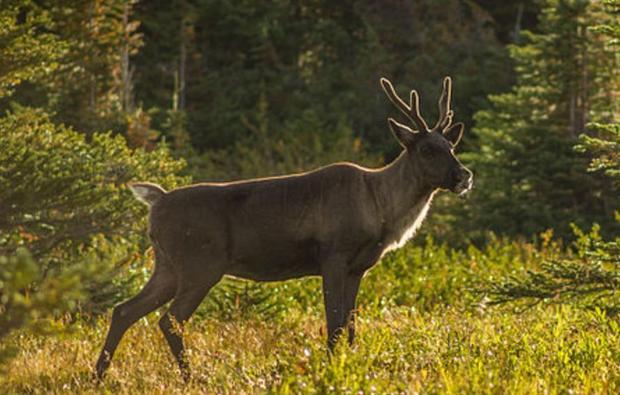Australian Bryce Comer was a carpenter by trade, at least until 2008 when he came to Canada and began trudging through the dense forest of British Columbia’s Kootenay Pass. He knew little about the Canadian wilderness and even less about the southern mountain caribou he was trying to document.
Armed with a camera and tripod, Comer set out to gather footage in what was supposed to be a 20-minute documentary for a nature film contest. “It was all a huge learning curve,” he said.
Comer had found out that the South Selkirk caribou herd would be an ideal subject for his film because the herd had been on the decline for years, however, it appeared to be making a rebound. The Selkirk herd was estimated to have about 50 members, living in an ecosystem that stretched from British Columbia to Washington and Idaho.
But the conservation story Comer wanted to tell has turned out to become a separate and very sad story of the mismanagement of our precious ecosystems and the creatures that inhabit them.
And then there were three
“It was like a huge kick in the gut,” Comer said, after finding out earlier this year that the caribou he’d been following for nearly a decade were on the brink of disappearing.
“In the absence of extreme measures, the herd is functionally lost,” said Candace Batycki of the Yellowstone to Yukon Conservation Initiative. “There are only three females remaining – we don’t know if any of them are pregnant. It’s a pretty dire situation.”
The situation is so extreme that by next week, next month, or next year, the last remaining members of the Selkirk herd could be gone forever, making a sad irony of the animal’s nickname, the “gray ghost.”
Adding to the news about the Selkirk herd, another herd, known as the South Purcells herd in British Columbia, are in similar straits. This herd and the Selkirk herd are just two of the 10 herds of caribou that Canada has declared as being under “imminent threat” of disappearing.
And of the 10 herds under threat, seven are located in British Columbia, while the other three are found in Alberta. At the last aerial count, researchers counted three females and one male left in the Purcell herd, down from 16 animals last year. “When you get in a situation of such small herds, it’s not unusual to expect a dramatic decline at some point,” says Chris Johnson, a wildlife ecologist at the University of Northern British Columbia, reports the NRDC.
Our Australian photographer just happened to be at the right place at the right time to document the demise of the Selkirk herd, and the documentary he took almost a decade filming as a success story turned into a film that instead, documents a massive conservation failure.
“It changed from being this success story,” Comer says, “to trying to show what was actually going on here, and the reasons why.”
A culmination of threats
Weighing close to 600 pounds, the mountain caribou feed on slow-growing lichen that relies on centuries-old trees to develop. But slow growth forests are being logged, legally and illegally, and as civilization encroaches further into what used to be wilderness, natural habitat is disappearing.
Add in mining and drilling for fossil fuels and the whole ecosystem is turned upside-down. These factors, deforestation, habitat fragmentation, and climate change are not specific to just Canada, but the U.S. as well. According to the Canadian Association of Petroleum Producers, as much as 70 percent of Alberta’s oil sands reserves are found within caribou habitats.
And while the Canadian government set aside 5 million acres of mountainous caribou habitat for protection, the valleys below are chopped up with residential areas and logging operations. And in the U.S., there is now the very good possibility that the U.S. Endangered Species Act is going to be gutted.
The Last Mountain Caribou
Mr. Comer’s documentary is well worth watching. Not only is the photography absolutely stunning, but the story it tells is so very compelling. If anything, the film sends all of us a message on the need to save the rest of their kind, the continent’s remaining 51 woodland caribou herds.
“What are our children going to say … when they see the caribou on the quarter and there is none left?” Comer asked. “Why did you let that happen?”

















